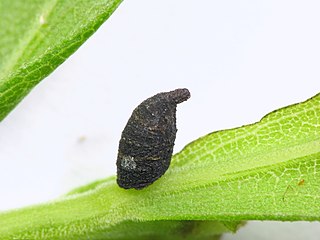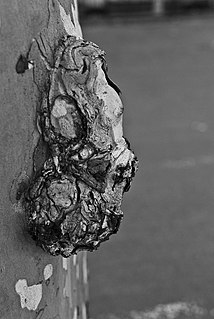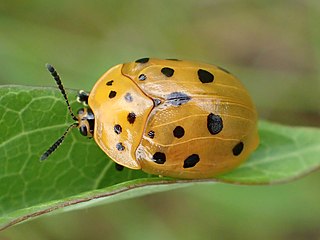
Platanus is a genus consisting of a small number of tree species native to the Northern Hemisphere. They are the sole living members of the family Platanaceae.

Platanus occidentalis, also known as American sycamore, American planetree, western plane, occidental plane, buttonwood, and water beech, is a species of Platanus native to the eastern and central United States, the mountains of northeastern Mexico, extreme southern Ontario, and possibly extreme southern Quebec. It is usually called sycamore in North America, a name which can refer to other types of trees in other parts of the world.

Acer pseudoplatanus, known as the sycamore in the British Isles and as the sycamore maple in the United States, is a species of flowering plant in the soapberry and lychee family Sapindaceae. It is a large deciduous, broad-leaved tree, tolerant of wind and coastal exposure. It is native to Central Europe and Western Asia, from France eastward to Ukraine, northern Turkey and the Caucasus and southward in the mountains of northern Spain and Italy.

Phyllophaga is a very large genus of New World scarab beetles in the subfamily Melolonthinae. Common names for this genus and many other related genera in the subfamily Melolonthinae are May beetles, June bugs, and June beetles. They range in size from 12 to 35 mm and are blackish or reddish-brown in colour, without prominent markings, and often rather hairy ventrally. These beetles are nocturnal, coming to lights in great numbers.

Ulmus changiiW. C. Cheng, occasionally known as the Hangzhou elm, is a small deciduous tree found across much of China in forests at elevations of up to 1800 m. Owing to its increasing scarcity, U. changii was added to the Hainan Province Protected Plants List in 2006.

Ulmus lanceifoliaRoxburgh, ex Wall., occasionally known as the Vietnam elm, is a very large tree endemic to a wide area of southern Asia. Its range extends southeast and eastwards from Darjeeling in the Himalaya, through Bangladesh, southern China, Myanmar, Thailand, Laos, Vietnam and on discontinuously into Indonesia, straddling the Equator in Sumatra and Celebes.

Leaf beetles of the genus Neochlamisus are sometimes known as the warty leaf beetles. They are members of the case-bearing leaf beetle group, the Camptosomata. Measuring 3–4 millimeters in length as adults, they are cryptic, superficially resembling caterpillar frass. Seventeen, sometimes 18 species are presently accepted in this genus, all of them occurring in North America.

The American elm cultivar Ulmus americana 'Brandon' was raised by Lacombe Nurseries Lacombe, Alberta, Canada, before 1969; it may be synonymous with another cultivar from the same source known as 'Patmore', selected and raised by R. H. Patmore from a native tree in Brandon, Manitoba.

The American elm cultivar Ulmus americana 'Lewis & Clark' is a development from the North Dakota State University (NDSU) Research Foundation breeding programme, released in 2004 to commemorate the 200th anniversary of the eponymous expedition. The cultivar was cloned from a tree discovered in 1994 along the Wild Rice River south west of Fargo, ND., where all those around it had succumbed to Dutch elm disease; the tree remains in perfect health (2008). Prairie Expedition proved only moderately successful in the US National Elm Trial, averaging a survival rate of 62.6% overall, owing largely to environmental factors rather than susceptibility to Dutch elm disease.

The American elm cultivar Ulmus americana 'Beebe's Weeping' was propagated from a tree growing in the wild at Galena, Illinois, by Mr. E. Beebe circa 1889. It was marketed by the Klehm nursery of Arlington Heights, Illinois, in the early 20th century, as Ulmus 'American Galena Weeping', "American Weeping Elm".

The American elm cultivar Ulmus americana 'Aurea' was cloned from a tree discovered by F. L. Temple in Vermont at the end of the 19th century.
The American Elm cultivar Ulmus americana 'Fiorei' was raised by the Charles Fiore Nurseries, Prairie View, Illinois, before 1956, but is no longer listed by the company.

Camptosomata are the case-bearing leaf beetles or camptosomates, named for their larval habit of carrying a case of waste material. This group consists of two subfamilies of Chrysomelidae : Lamprosomatinae and Cryptocephalinae.

Xanthogaleruca luteola, commonly known as the elm-leaf beetle, is a beetle species in the family Chrysomelidae that is native to Europe but invasive in other parts of the world.
The American Elm cultivar Ulmus americana 'Creole Queen' was cloned from a tree growing outside New Orleans and was released in 2008.

The fecal shield is a structure formed by the larvae of many species of beetles in the leaf beetle family, Chrysomelidae. It is composed of the frass of the insect and often its exuviae, or bits of shed exoskeleton. The beetle may carry the shield on its back or wield it upon its posterior end. The main function of the fecal shield is defense against predators. Other terms for the fecal shield noted in the literature include "larval clothing", "kotanhang", "faecal mask", "faecal pad", and "exuvio-faecal annex".

Ceratocystis platani is a fungus that causes a disease on plane trees in the genus Platanus.

The yellow-poplar weevil, scientific classification Odontopus calceatus, is a type of weevil which occurs in much of the eastern and southeastern United States. Its range is as far north as Massachusetts all the way south to the Gulf of Mexico, and from the Atlantic westward to the Mississippi River. It is also known as the sassafras mining weevil, tuliptree leafminer, tulip tree weevil, or the magnolia leaf miner.

Chelymorpha cassidea, known generally as the Argus tortoise beetle or milkweed tortoise beetle, is a species of leaf beetle in the family Chrysomelidae. It is found in the Caribbean and North America.
Chilocorus orbus is a species of lady beetle in the family Coccinellidae. It is native to North America. It is a black, domed beetle with two large red spots and is commonly called the twice-stabbed lady beetle. Both adults and larvae feed on scale insects.

















